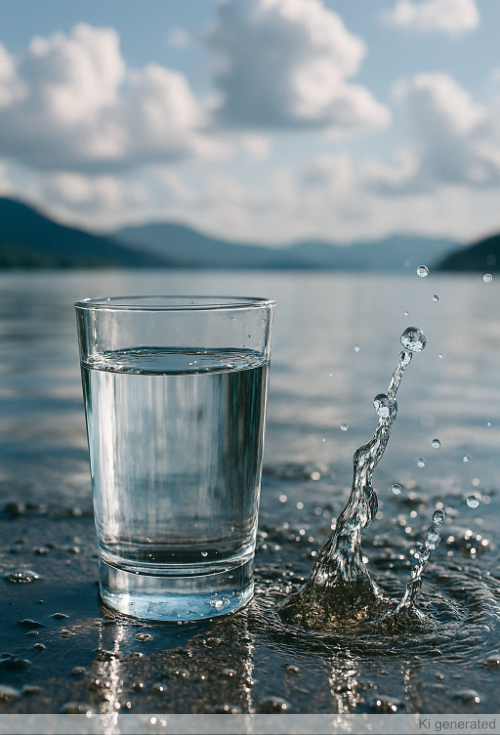- Water tests
- Air and pollutants analysis
- Mold analyses
- Asbestos analyses
- Rapid tests
-
Knowledge
- Further news
- Analysis made easy
- Facts About Drinking Water
- Facts about Indoor Air
- Facts about Mold
- Facts about Asbestos
-
Water quality in Switzerland
- Water Scarcity and Water Quality
- Drinking Water in Switzerland
- Tap Water in Switzerland: Quality and Controls
- Drinking Fountains in Switzerland
- Water Quality - Canton Basel
- Water Quality - Canton Bern
- Water Quality - Canton Geneva
- Water Quality - Canton Zurich
- NEWS: Zurich Drinking Water Map
- Drinking Water - City of St. Gallen
- Water Quality - City of Baden
- Water Quality - City of Bern
- Water Quality - City of Zurich
- Water Analysis - City Lucerne
- Water Quality - City of Winterthur
- The Water Supply of the City of Thun
- Initiative for Clean Drinking Water
- Partnership with WATER FOR WATER (WfW)
- Help & Services
Water, the Elixir of Our Lives

Humans, animals, and plants exist through and with water. The water cycle is symbolic of the cycle of life. A drop of rain falling on the earth. Driven by the wind, it seeks its way, only to evaporate in the sun's rays. The elements write the natural cycle of water – from its creation to its renewal.
Water pollution and resource wastage are among the greatest burdens that imbalance the water cycle. Saving water and maintaining its quality are central challenges of our time.
Reasons for Water Scarcity
Climate change and over-exploitation – these are two main reasons for water scarcity in Switzerland. Longer dry periods cause groundwater levels to drop, while demand continues to rise: population, households, and agriculture increasingly consume water. Although there is generally enough water in Switzerland, it is not evenly distributed. Water availability, distribution, and quality form the tension field that suppliers must address.
Water Pollution – Responsibilities in Ensuring Drinking Water Quality
Swiss water quality is considered excellent. Nevertheless, media regularly report on contamination – often without cause analysis. A common cause lies not with the suppliers, but in private house installations. As soon as water leaves the public network and enters a building, the responsibility lies with the owner. This creates an obligation to independently test and ensure water quality.
Water Analyses – The Path to Security
A water analysis provides certainty. Whether for families or tenants – a test quickly shows whether pollutants are present in the drinking water. With an analysis finder, the appropriate test procedure is recommended based on a few details. Sampling is done with an easy-to-use test kit. The sample is examined in the laboratory; an understandable analysis report provides clarity. From this, concrete measures for improvement can be derived.
Water analyses offer transparency and security. The three steps – buy, analyze, secure – help to ensure water quality sustainably.
More on the topic of water:
✔ Heavy metals and pollutants
✔ For general drinking water, softeners
✔ Heavy metals and contaminants
✔ Separate bacteria test recommended
✔ Heavy metals and contaminants
✔ Separate bacteria test recommended
✔ Analysis for lead also included
✔ Separate bacteria test recommended
✔ Most common contaminants
✔ Bacteria analysis available separately
✔ Most common pesticides
✔ Glyphosate separate analysis
✔ 20 common PFAS chemicals
✔ Per- and polyfluorinated alkyl substances
✔ 100 Test strips
✔ For general drinking water, water softeners



